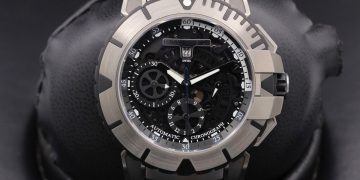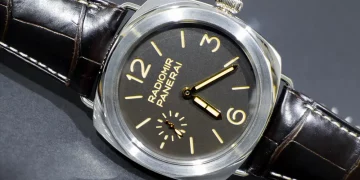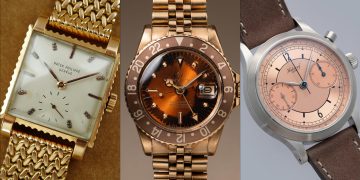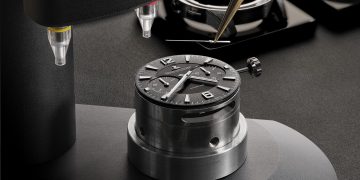Introduction: The Misunderstood Art of Watch Maintenance
For many watch enthusiasts, the question of how often a timepiece should be serviced is a matter of mystery. Conventional wisdom often suggests servicing your watch every 3-5 years, but does this rule truly apply to all watches? In fact, there are several myths surrounding watch servicing intervals that could lead to unnecessary costs or, conversely, missed opportunities for proper maintenance.
When it comes to servicing watches, there’s no one-size-fits-all answer. Various factors—ranging from the watch’s design and movement type to how frequently you wear it and in what conditions—can significantly affect how often a timepiece needs attention. In this article, we’ll break down common myths about watch servicing and provide a more nuanced understanding of how to best care for your timepiece over the years.
The Myth of Regular 3-5 Year Intervals
One of the most common pieces of advice you’ll hear about watch maintenance is that your watch should be serviced every 3-5 years. This guideline is widely accepted but is not a universal truth. The frequency with which a watch needs servicing depends on several factors, including the type of movement, the environment in which it’s worn, and the brand’s specific recommendations.
Watches with quartz movements, for example, generally require less frequent servicing than mechanical watches. The main reason for this is that quartz watches have fewer moving parts, so they don’t experience the same level of wear and tear as mechanical models. However, quartz watches still require occasional battery changes and service to maintain optimal performance.
On the other hand, mechanical watches, especially those with complex movements, might need servicing more often to keep the intricate parts in proper working order. While the 3-5 year guideline is a good rule of thumb, it’s not an absolute requirement for all watches.
What Actually Needs Servicing?
Before deciding when to service your watch, it’s important to understand what actually needs attention during a service. When you send your watch to a professional for servicing, several components are typically examined and cleaned:
1. Movement Cleaning and Lubrication
- Why it’s important: A mechanical watch’s movement consists of hundreds of tiny, intricate parts that require regular cleaning and lubrication to avoid friction and wear. Over time, the oil used to lubricate the parts can degrade, leading to damage and diminished accuracy.
- How often: The frequency of cleaning and lubrication depends on the watch’s use and its movement complexity. For example, a high-end chronograph or perpetual calendar may require more frequent servicing due to its sophisticated mechanisms.
2. Water Resistance Check
- Why it’s important: Water resistance is not permanent. Seals and gaskets degrade over time, compromising the watch’s ability to withstand water exposure. If you frequently expose your watch to water, it’s essential to have it checked regularly for leaks.
- How often: This check should ideally be performed every 12-18 months, especially if your watch is exposed to moisture.
3. Case and Crystal Inspection
- Why it’s important: Scratches, dents, and other imperfections can affect the overall performance of a watch. Regular inspections ensure the case remains sealed and that there are no issues that could compromise the watch’s integrity.
- How often: A visual inspection is recommended at least every year to catch any minor issues before they become major problems.
4. Strap or Bracelet Condition
- Why it’s important: Leather straps can wear out due to daily use, while metal bracelets may loosen or develop issues with the links. Keeping an eye on the condition of your watch’s strap or bracelet helps maintain both the aesthetic and functional value of the watch.
- How often: If you wear your watch regularly, a yearly check-up is advisable.
5. Battery Replacement for Quartz Watches
- Why it’s important: If you own a quartz watch, the battery eventually needs to be replaced to ensure the watch continues to run accurately.
- How often: Battery changes are typically needed every 1-2 years, depending on the type of battery and the watch’s usage.
Factors That Influence the Need for Servicing
While there are general recommendations for servicing, many factors influence how often a watch actually requires attention. Here are some of the most important factors to consider:
1. Type of Movement
- Quartz Movement: As mentioned, quartz movements have fewer moving parts and generally require less frequent servicing. Battery changes and occasional gasket inspections are usually sufficient to maintain a quartz watch.
- Mechanical Movement: Mechanical watches require more attention due to the complex arrangement of gears, springs, and lubricants. Automatic movements are particularly sensitive to wear and tear, and they typically require more frequent servicing to maintain optimal accuracy.
2. Watch Brand and Model
- Luxury Watches: High-end watches, especially those from brands like Rolex, Patek Philippe, or Audemars Piguet, often have stricter servicing recommendations. These watches are precision-engineered and may require servicing to maintain their longevity and value.
- Less Expensive Watches: While still requiring care, less expensive watches may not need the same level of servicing. However, regular checks of water resistance and movement accuracy are still important.
3. Usage Patterns
- Daily Wear: If you wear your watch every day, especially in environments with dust, moisture, or temperature fluctuations, it may need to be serviced more frequently. Continuous movement causes wear on the internal parts, and constant exposure to external elements can affect the watch’s seals and case.
- Occasional Use: If you wear your watch only occasionally, you may not need to service it as often. However, it’s still a good idea to keep track of time accuracy and the condition of the watch periodically.

4. Exposure to Extreme Conditions
- Watches exposed to extreme environments, such as underwater diving, outdoor adventures, or high-heat settings, will naturally require more frequent servicing due to the stresses placed on them. Seals may wear down quicker, and the watch’s movement may be more susceptible to damage from physical shocks or temperature changes.
5. Aesthetic Preferences
- Over time, a watch’s aesthetic may change. Scratches may appear on the case or crystal, and the bracelet might loosen. If maintaining the appearance of your watch is important to you, you may want to service it more frequently to ensure the case remains pristine, and the movement stays accurate.
How to Tell if Your Watch Needs Servicing
Sometimes, it’s not obvious when your watch needs servicing. However, there are a few telltale signs that it’s time to send your timepiece for professional care:
- Loss of Accuracy: If your watch is running fast or slow by more than a few seconds per day, it may be time to have it serviced.
- Water Resistance Failure: If your watch fogs up after exposure to moisture, or if you notice water inside the case, it’s essential to have the seals and gaskets replaced.
- No Power Reserve: For automatic watches, if the watch stops running even after being worn regularly, it could indicate that the movement needs lubrication or servicing.
- Visible Damage or Wear: Any visible damage to the case, crystal, or bracelet should prompt a professional inspection.
Costs and Benefits of Timely Watch Servicing
The cost of servicing your watch can vary depending on the type of watch and the level of service required. For a basic quartz watch, servicing might be relatively inexpensive, mainly focusing on battery changes, gasket replacements, and cleaning. On the other hand, a high-end mechanical watch might require a more in-depth service, such as disassembling the movement, cleaning, lubrication, and reassembly.
While servicing may come with a hefty price tag, especially for luxury timepieces, it can extend the life of your watch and preserve its value. Proper servicing prevents small issues from becoming big, expensive problems, and it ensures your watch maintains its accuracy and functionality.
Conclusion: The Right Time to Service Your Watch
There’s no universal answer to the question of how often you should service your watch, but understanding the specific needs of your timepiece is crucial. While the 3-5 year rule can be a helpful guideline, several factors—such as the type of movement, usage patterns, and brand recommendations—play a significant role in determining the ideal servicing interval.
By paying attention to your watch’s performance and seeking professional help when needed, you can ensure that your timepiece stays in top condition for years to come. Remember, the key to maintaining your watch is not only following general guidelines but also recognizing the individual needs of your specific timepiece.





































